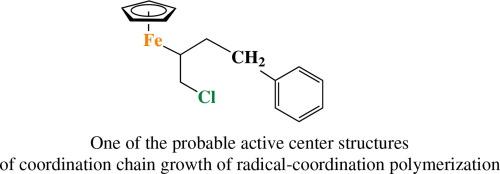用于自由基配位聚合的聚合物催化剂活性中心的形成
IF 1.8
4区 化学
Q3 CHEMISTRY, MULTIDISCIPLINARY
引用次数: 0
摘要
二茂铁、自由基引发剂和单体在甲苯溶液中以 1:2:10 的摩尔比相互作用的产物样品的色谱-质谱法,用于实验检测表明自由基配位聚合的金属络合物活性中心的结构和形成机制的产物。结果表明,在次级自由基的参与下,形成了与量子化学模型所提出的结构相似的结构。本文章由计算机程序翻译,如有差异,请以英文原文为准。

Formation of active centers of polymer catalysts for radical-coordination polymerization
Chromatography–mass spectrometry of samples representing the interaction products of ferrocene, radical initiator and monomer taken in the molar ratio of 1:2:10 in toluene solution was used for experimental detection of products indicating the structure and mechanism of formation of metal complex active centers of radical-coordination polymerization. Structures similar to those proposed by the quantum-chemical modeling were demonstrated to be formed with the participation of secondary radicals.
求助全文
通过发布文献求助,成功后即可免费获取论文全文。
去求助
来源期刊

Mendeleev Communications
化学-化学综合
CiteScore
3.00
自引率
21.10%
发文量
226
审稿时长
4-8 weeks
期刊介绍:
Mendeleev Communications is the journal of the Russian Academy of Sciences, launched jointly by the Academy of Sciences of the USSR and the Royal Society of Chemistry (United Kingdom) in 1991. Starting from 1st January 2007, Elsevier is the new publishing partner of Mendeleev Communications.
Mendeleev Communications publishes short communications in chemistry. The journal primarily features papers from the Russian Federation and the other states of the former USSR. However, it also includes papers by authors from other parts of the world. Mendeleev Communications is not a translated journal, but instead is published directly in English. The International Editorial Board is composed of eminent scientists who provide advice on refereeing policy.
 求助内容:
求助内容: 应助结果提醒方式:
应助结果提醒方式:


